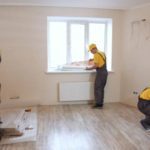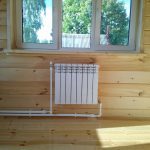Content
- 1 The importance of waterproofing
-
2 Types of waterproofing
- 2.1 Roll
- 2.2 Coating compounds
- 2.3 Sanitary plaster
- 2.4 Special impregnation
- 2.5 Waterproof paints
- 2.6 Suture insulation
The bathroom is the wettest room in the apartment, its decoration experiences constant temperature changes. Under such conditions, fungi and mold multiply at an accelerated rate unless action is taken. Waterproofing allows you to keep the finishing material in its original state for as long as possible.

The importance of waterproofing
Waterproofing in the bathroom should be done, preferably from all sides. High-quality floor insulation can save you in cases when a tap suddenly bursts or water overflows in the bathroom. Waterproofing the ceiling will protect the finish and household appliances from flooding the neighbors. Walls also need protection because they constantly experience the effects of moisture on themselves. Water gradually penetrates between the joints of the tiles inward, destroying the walls and decorative finishes.

Without waterproofing, a moldy odor will soon appear in the bathroom, which can spread beyond it. The procedure for protecting surfaces from water can be carried out in several ways and independently.
Types of waterproofing
There are several varieties of waterproofing, suitable for different building materials and conditions.
Roll
Such waterproofing is an adhesive bitumen sheets reinforced with fiberglass or polyethylene. For reliable protection, several layers must be applied. Minus roll waterproofing - raising the floor level by 5 cm.

Coating compounds
This type of insulation includes mastics based on bitumen, acrylic or cement-polymer components. Acrylic mastics are more popular due to their easy application, lack of smell at work and excellent waterproofing. When working with mastic, use rollers or a brush, apply it in several layers.

Sanitary plaster
If the bathroom is undergoing major repairs, then it is optimal to use plasters based on sand, waterproofing and antifungal additives. In addition, plaster is used to align walls, ceilings and floors.

Special impregnation
An easy way to treat the surface is to use waterproofing impregnation. It penetrates the pores of concrete or plaster, giving them reliable protection against water. In this case, the surface remains breathable.

Waterproof paints
You can paint the walls with waterproof compounds, which are also the finish. The paint will last about 5-6 years.

Suture insulation
It is used for waterproofing joints between the floor and the wall. It is made of rubber impregnated with special compounds.


-
 5 unexpected storage ideas
5 unexpected storage ideas
-
 5 reasons to change the wizard without waiting for the repair to finish
5 reasons to change the wizard without waiting for the repair to finish
-
 Top 5 Ways Electricians Fool You
Top 5 Ways Electricians Fool You
-
 5 common problems of a ceiling kitchen
5 common problems of a ceiling kitchen
-
 What types of lamps are much better than LED
What types of lamps are much better than LED
-
 Is it possible to restore an old bathroom
Is it possible to restore an old bathroom
-
 How can gas be delivered to the house at half the price
How can gas be delivered to the house at half the price
-
 5 points to save on repairs
5 points to save on repairs
-
 What mistakes are made when the radiator is connected diagonally?
What mistakes are made when the radiator is connected diagonally?
-
 Top 5 hidden dirty places in the apartment
Top 5 hidden dirty places in the apartment
-
 5 models of computer chairs that will harm your health
5 models of computer chairs that will harm your health
-
 The most unsuccessful decisions in the layout of the apartment
The most unsuccessful decisions in the layout of the apartment
New publications are published daily on our channel in Yandex. Zen
Go to Yandex. Zen


